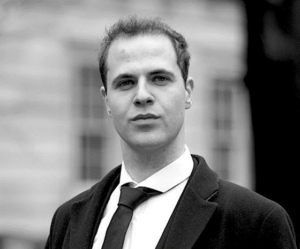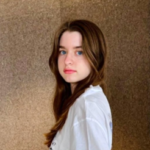
By Aela Niget-Powers, Student at ESSEC Business School
The intersection of artificial intelligence (AI) and art sparks an ongoing debate that challenges traditional notions of creativity and human expression. Historically, art has been considered a uniquely human endeavor—a canvas upon which our deepest emotions, experiences, and intellect are rendered visible. However, some paintings have hidden layers that conceal these experiences and emotions. As AI technology evolves, a new paradigm suggests that machines can also partake in this human pursuit.
The history of AI in art dates back to 1973 when Harold Cohen, an American computer scientist, developed AARON, a program that created art based on a set of rules. Generated algorithmically, the abstract pieces of Cohen resembled the works of Jackson Pollock, fundamentally altering the conception of what constitutes ‘art.’ As AI-generated art gains prominence, it brings with it a host of philosophical and ethical questions about the role of machines in the creative process. Central to this discourse is Oxia Palus, a pioneering art company that employs AI to resurrect lost artwork. Their efforts have captivated the public, particularly highlighted by their exhibition at VivaTech, where they unveiled a reconstructed van Gogh painting, stirring both intrigue and debate.
To explore these complexities, I had the chance to interview Anthony Bourached, co-founder of Oxia Palus. Anthony’s unconventional journey from a fondness for chess strategy and studies in theoretical physics and machine learning to the art world provides a unique lens through which to view AI’s impact on art. Initially dismissive of the significance of art, his perspective shifted as he delved into the precisions of complex systems based on statistical physics, eventually recognizing art as a rich repository of sociological data that could be quantified through scientific methods.
“If you envision a hierarchy of complexity starting with physics as the most basic, progressing through chemistry and biology and then neurology, psychology, and sociology, you arrive at art. Art stands as a sophisticated repository of sociological insights spanning epochs. Ultimately, art crowns this hierarchy of complexity. I find this notion profoundly beautiful. It’s not one’s passions that change over time, but one’s understanding of things that they’re passionate about.”
The Trio of Oxia Palus
Oxia Palus uncovers hidden masterpieces using a combination of X-ray fluorescence imaging and sophisticated AI algorithms. This technology detects and analyzes the hidden layers beneath a painting’s surface. The AI then reconstructs the obscured artwork, piecing together fragments of visual data to recreate the image as closely as possible to its original. By integrating spectroscopic imaging, artificial intelligence, and 3D printing, Oxia Palus is able to generate lost artwork with remarkable accuracy. Anthony and George Cann conceived Oxia Palus during their studies at UCL. They later recruited Jesper Eriksson, an interdisciplinary artist who holds double degrees in Philosophy and Mathematics from the University of Cambridge and the University of Durham, specializing in mathematical logic and theoretical physics. The combination of the trio’s expertise has resulted not only in the recovery of invaluable artwork but has revealed the formidable contributions of AI programs to the understanding of art and culture.
Vincent van Gogh: “Two Wrestlers”
One of the most intriguing projects undertaken by the Oxia Palus trio is the reconstruction of a previously lost painting by Vincent van Gogh. Underneath van Gogh’s well-known still life of wildflowers, the dynamic trio rediscovered “Two Wrestlers.” The creation of this early work had been noted by van Gogh in correspondence with his brother Theo, but the painting itself had been lost to history as the artist usually painted over his earlier works due to financial constraints. By training their AI program to recognize van Gogh’s distinctive use of color and brushwork, Oxia Palus was able to recreate this hidden gem, allowing the art world to gain new insights into van Gogh’s artistic evolution and thematic preoccupations.
Amedeo Modigliani: “Portrait of Beatrice Hastings”
The Oxia Palus trio further succeeded in the unveiling of a hidden portrait by Amedeo Modigliani. They programmed the IA and calibrated their instruments to capture his distinctive style, characterized by elongated faces and necks and influenced by African art, to identify the “Portrait of Beatrice Hastings” hidden beneath his painting entitled “Portrait of a Girl” (1917). The owners of the Tate were initially astonished when X-ray photography revealed a phantom portrait behind the girl. Beatrice Hastings is known as Modigliani’s first serious love and muse, whom experts surmise influenced the artist both intellectually and visually whilst they lived together from 1914 to 1916, the exact years when he developed his signature style. This particular discovery not only adds to Modigliani’s oeuvre but also supports the description of his relationship with Hastings as passionately influential yet tempestuous. Modigliani painted Hastings 14 times. When this 15th and final portrait was uncovered, the curator of the Tate suggested that Modigliani purposely painted over her portrait after their relationship ended in 1916.
Pablo Picasso: “La Femme Perdue”
Among the most provocative endeavors undertaken by the Oxia Palus trio is the resurrection of Pablo Picasso’s “La Femme Perdue.” Concealed beneath another of Picasso’s renowned works, this lost painting was meticulously restored through a process that harmonized art historical research with cutting-edge technology. Initial reactions within the art community were polarized. Nonetheless, Dr. Bourached and his team emphasize that the role of AI is not to forge new art but to unveil what has long been obscured, thereby safeguarding and enriching our comprehension of Picasso’s legacy.
In their exploration of effective processes, Dr. Bourached and co-founder Dr. Cann employed Neural Style Transfer (NST), a digital technique originating in Germany, to recreate the painting. This method allows the application of an artist’s style to images. “La Femme Perdue” regained its colors through this innovative approach after its discovery in 1998 via X-ray, initially seen only in grayscale behind “Le Vieux Guitariste,” a celebrated work by the Spanish painter. Yet:
“We invested significant effort to integrate all elements, making it especially surprising when we received an angry call from a French speaker representing the administration,” Dr. Bourached shared. “The administration of the Picasso Museum was unyielding, leading us to decide against exhibiting the work or the collection.”
Ethical Considerations and Future Directions
Should the message remain concealed? This quandary persists as one of the paramount issues at the intersection of art and technology. If an artist deliberately embeds a message within his or her work, should AI bring it to light? For many artists, considerable time lapses before they are ready to place the piece on public display, raising questions about whether something intended to remain unseen should be unveiled. According to some artists, certain emotions should remain private, visible only to themselves for the rest of their lives or perhaps forever. However, from a historical viewpoint, uncovering hidden elements within a piece, as demonstrated in the Modigliani process, can enhance our understanding of the artwork as a whole. Moreover, if this artwork is of interest, it is not just a treat for art enthusiasts; it provides opportunities for technological feats. Canvases, particularly those of masters, are fragments of history; they can tell us a great deal not only about the artist but also about their life and historical context.
Consider van Gogh, whose works were occasionally hidden due to financial constraints. The revelation of secrets within such pieces is highly contingent on context. The ethical ramifications of AI in art are extensive, encompassing matters such as ownership, copyright, and the rights of original artists. The reconstructed artworks by Oxia Palus, for instance, are positioned as historical restorations rather than novel creations, thoughtfully integrated within the context of the creators’ original bodies of work.
According to Dr. Bourached, “AI doesn’t wrest art away from artists.” He asserts that AI can unlock fresh dimensions of understanding emotions and culture, offering insights previously beyond our grasp. To convey his comprehension of the relationship between AI and the art world as well as his own role, Dr. Bourached clarified, “One of the lesser-known magnificent quotes of Richard Feynman (1918–88) resonates with me. Dr. Feynman claimed that an artist friend once held up a rose to him and said, ‘I, as an artist, can look at this rose and just admire its beauty. You, as a scientist, cannot because you only see the constituents that make it up.’ Dr. Feynman replied to the effect, ‘that I can look at the rose and know the evolutionary reason why its petals have that shape and that color, that I know the mechanism through which it draws water through its stem, making the form more beautiful, not less.’ I think it’s the closest point I’ve heard that aligns with my philosophy: an interest in the mechanism must be the foundation of the ultimate beauty of art.”
Oxia Palus’ work thus heralds a new chapter in the art world, where AI functions as both a creative tool and a conduit for deeper appreciation and comprehension of art. Dr. Bourached’s journey from skepticism to recognition of AI’s worth in art underscores its transformative potential. The convergence of AI and human creativity charts numerous avenues for future exploration. As AI continues to evolve, it holds promise for uncovering further hidden masterpieces, presenting new interpretations of familiar works, and potentially guiding contemporary artists in their creative endeavors. This collaboration between AI and art signifies a pivotal shift that may redefine our cultural legacy and the essence of creation.

Aela Niget-Powers
Aela is a student at ESSEC Business School, holding dual French and American citizenship. Committed to her passion for the arts, she attends night classes at l'école du Louvre to further her knowledge and appreciation of artistic expression. Aela has explored diverse cultures worldwide, fostering a global perspective. Her editorial endeavors are driven by a desire to elevate conversations, infusing them with a nuanced exploration of the dynamic interplay between art and society.